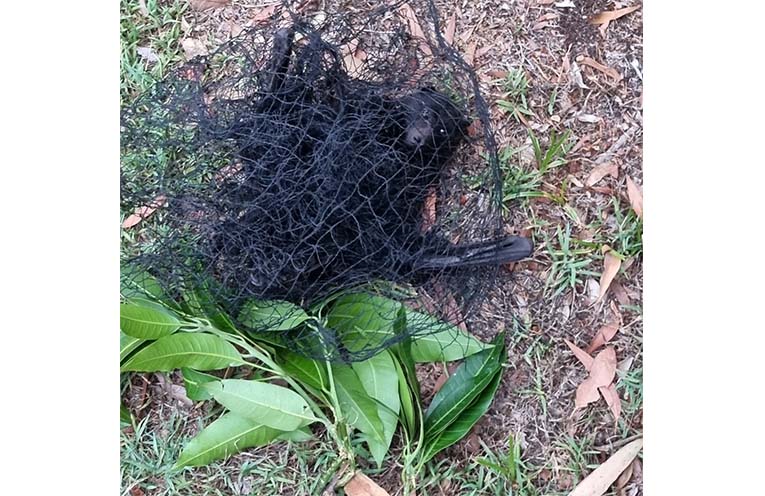
NATIVE creatures great and small require closer consideration, as some Hawks Nest residents have recently learnt the hard way.
Flying foxes have, in summers past and this season, regularly swarmed the skies of an evening, seeking the sweet nectar of eucalypt blossoms and other fruiting trees, however, many have been unintentionally netted by humans attempting to protect their harvest.
 Advertise with News of The Area today.
Advertise with News of The Area today.It’s worth it for your business.
Message us.
Phone us – (02) 4981 8882.
Email us – media@newsofthearea.com.au
One furry flyer was discovered last week, ensnared and entangled in a tree net thrown over some ripening mangoes, triggering a call to Wildlife In Need of Care (WINC), the local volunteer wildlife assistance group.
“The biggest issue we have is netting,” Nat from WINC told NOTA.
“People want to protect their fruit, but they have to use the right kind of netting – in Victoria, the law says fruit-tree nets must be no greater than 5mm in aperture, so that critters can’t get stuck.”
The NSW Government’s Environment Department suggests the same as guidelines, however, there is no formal existing legislation, which means people are free to use the wrong sizes, and stores can continue selling them.
Witnessing a trapped flying fox is quite distressing, especially as the average citizen can do nothing to help them for very real fear of contracting rabies or lyssavirus.
An easy way to know if netting is safe for wildlife is to check that you cannot poke your finger through the mesh.
“Recently, one community garden in Port Stephens had huge-aperture nets that inevitably degloved a flying fox,” Nat explained.
“Once you rescue them, you see they are beautiful and intelligent creatures.
“People don’t know that without bats, koalas die, as they are keystone pollinators, eating and moving around the eucalyptus blossoms at night.”
The volunteers at WINC are daily answering the call to take care of joeys, flying foxes, and all manner of native creatures, but say that the heart-breaking reality of instances like the flying fox entrapments is that 90 percent of issues are preventable.
By Thomas O’KEEFE